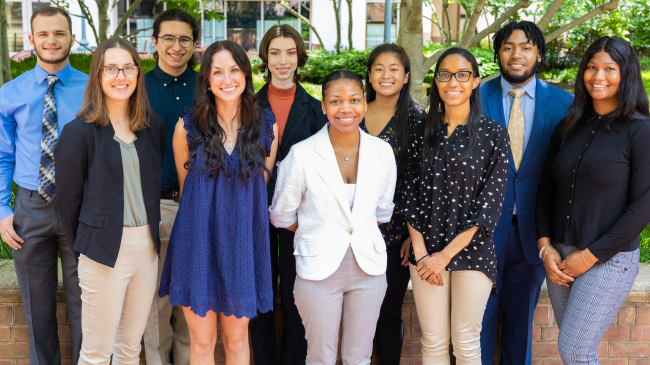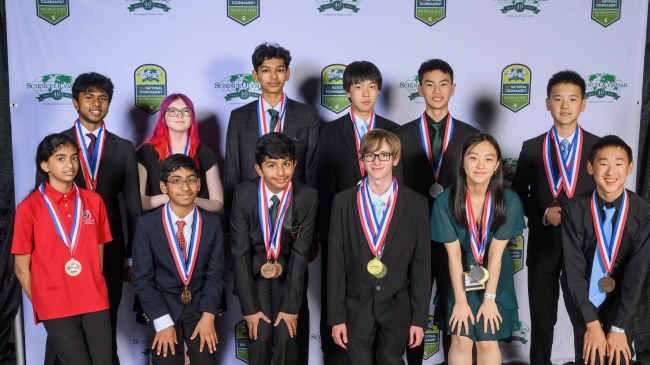Youth leaders are making waves in marine conservation and stewardship for the ocean and Great Lakes!
June is National Ocean Month! We’re highlighting youth who connected with and helped conserve the global ocean. Each story inspires us with a unique lesson on what we can learn from these young leaders as we celebrate and protect our blue planet.
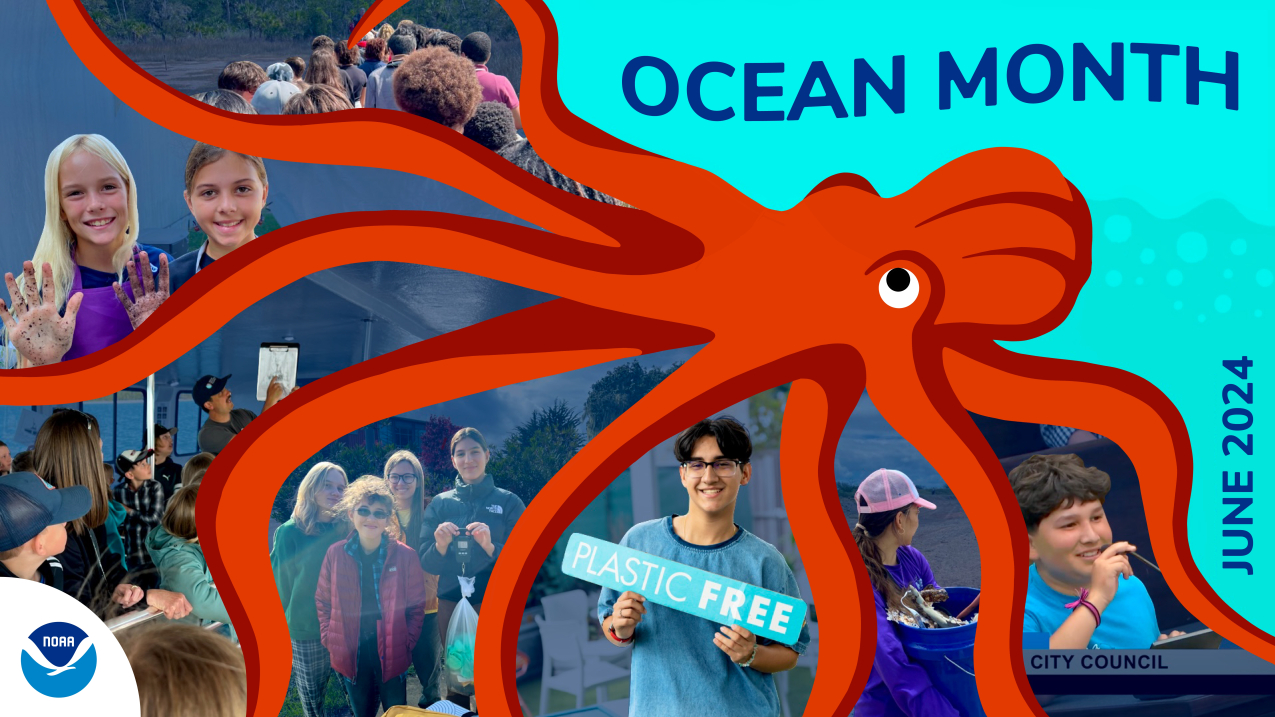
To celebrate National Ocean Month, NOAA Education is highlighting youth who connected with and helped conserve the global ocean. (Image credit: NOAA Education)
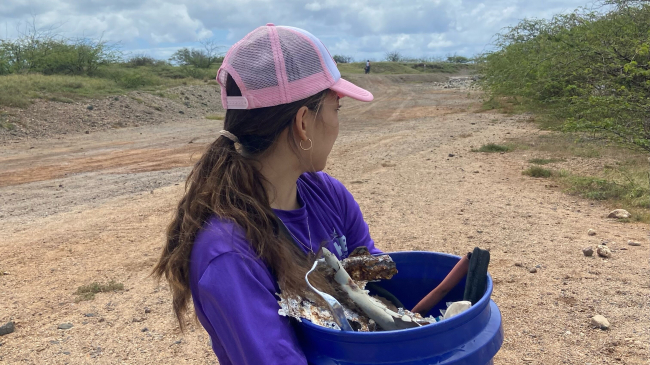
Impact through collective action
The inaugural cohort of NOAA Ocean Guardian Youth Ambassadors complete 50 ocean stewardship projects
The youth: 250 NOAA Ocean Guardian Youth Ambassadors. Students participated from 28 states, Guam, and the U.S. Virgin Islands. This program was established to spread awareness of the connection that each individual and community has to the ocean.
The action: Students aged 13 to 18 completed 50 environmental-based projects within their own schools or communities. They reached roughly 4,000 individuals about ocean conservation, removed more than 500 pounds of trash, and raised more than $1,000 for conservation nonprofits. Projects emphasized developing skills to delve into environmental issues and building community engagement, ranging from leading beach cleanups to local educational workshops.
The takeaway: Individuals can make big differences through collective action! While the ambassadors live across the nation, together they form a strong network that has made a big impact.
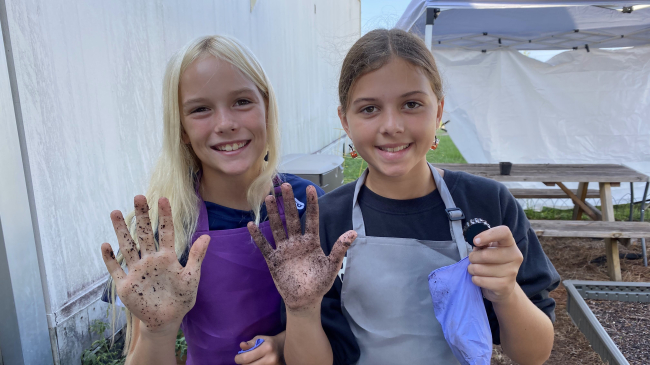
Planting the seeds for change
Elementary schoolers plant a native salt marsh nursery
The youth: Elementary school students in the St. Andrew Bay Watershed who led a coastal shoreline restoration as part of Clean Up and Restore: Empowering Future Changemakers, a NOAA Planet Stewards project.
The action: The students created a salt marsh nursery on the grounds of their elementary school to benefit their local waterways. Students planted, nurtured, monitored, and cared for the native Juncus grasses (black needle rush) throughout the school year. With the help of a local non-profit organization, St. Andrew Bay Watch, students used the grasses to restore a nearby coastal shoreline.
The takeaway: Taking environmental action doesn’t always require far-off solutions and fancy technology! You can make a difference right where you are.
Action down to a science
Graduating college students fill the gaps in our understanding of human impacts in the deep-sea
The youth: Eight graduating seniors from the University of Maryland, College Park, who worked closely with NOAA Ocean Exploration staff.
The action: The students analyzed observations of marine debris in the deep sea that were collected by NOAA Ship Okeanos Explorer over nine years. They developed a process for standardizing the data by type and quantity to make it easier for others to find, use, and conduct similar analyses. They identified more than 480 pieces of deep-sea marine debris, 30% of which were plastic, adding to our understanding of human impacts in the ocean. The students then summarized their findings by creating visual displays, a cumulative report, and a seminar presentation for the deep-sea and marine debris research communities.
The takeaway: Advancing our scientific knowledge about the planet is key to helping us better understand how to protect it!
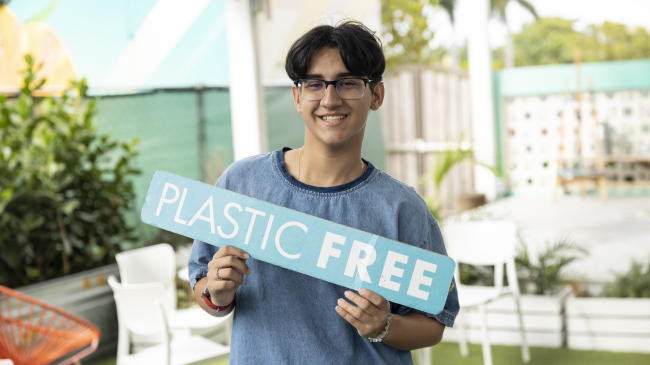
Youth leaders mean business
Junior Sustainability Consultants reduce community plastic waste to foster Plastic Free Cities
The youth: Local youth in five communities in Florida’s Miami-Dade County who were supported by the Ocean Conservancy and the NOAA Marine Debris Program.
The action: Working with the Plastic Free Cities project, youth became “Junior Sustainability Consultants” and learned how to encourage local businesses to reduce single-use plastics. Youth and businesses also came together for community activities, such as cleanup events, to educate and encourage community members to reduce marine debris in their city. This project aims to create long-term behavior change that reduces the use of single-use plastics for individuals and businesses and promotes conservation ethics.
The takeaway: Youth-driven efforts working with businesses are successful in leading environmental actions! This campaign can be replicated in other locations.
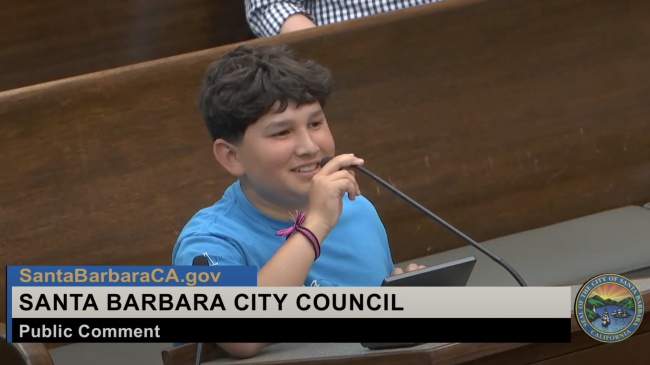
Everyone has a voice
Elementary students speak up in a Santa Barbara City Council meeting
The youth: Students from Adams Elementary School, a NOAA Ocean Guardian School in Santa Barbara, California.
The action: After participating in immersive ocean learning activities, the students made their voices heard. They spoke at a Santa Barbara City Council meeting during the public comment period to thank the mayor and council for supporting ocean conservation and climate resilience in the community including nearby Channel Islands National Marine Sanctuary. They also expressed appreciation for improvements in local infrastructure that get people walking, biking, and scootering.
The takeaway: No one is too young to use their voice to help protect their local environment! Plus, celebrating improvements in your community can be just as important as drawing attention to problems.
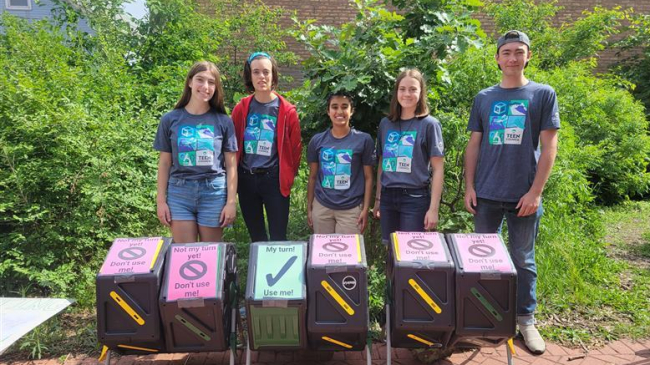
Creating community-centered change
Shedd Aquarium high school teens address education and access needs in local environmental issues
The youth: Six teens from the Shedd Aquarium in Chicago, Illinois. With funding support from NOAA, they applied what they learned from the 2021 Coastal Ecosystem Learning Centers (CELC) Virtual Youth Summit.
The action: The teens surveyed local students to get input about improving their environment and found that the majority thought their community needed to learn about and have better access to recycling, composting, and proper trash disposal. In response, they installed 111 gallons of composting space for a nearby community garden in collaboration with Latino Youth High School and Hammond Elementary School. Additionally, they created an educational video on proper waste management and hosted a training day for community members.
The takeaway: Local communities know their needs! Centering community needs and action in projects for environmental change can create bigger and more meaningful impacts.
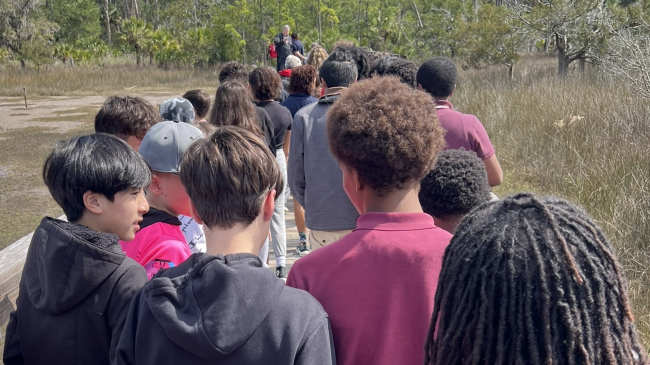
Ocean impacts from anywhere
Georgia’s first Ocean Guardian Schools explore connections to a national marine sanctuary
The youth: Seventy students from Oglethorpe Charter in Savannah and McCleskey Middle School in Atlanta. These students represent the first NOAA Ocean Guardian Schools in Georgia.
The action: The students met at Skidaway Island State Park to explore the salt marsh and learn how activities hundreds of miles inland affect offshore ocean habitats like Gray's Reef National Marine Sanctuary. Students committed to taking action in their own communities by leading efforts that included composting, native planting, recycling, and invasive species removal. They also built long-lasting friendships rooted in shared environmental passions.
The takeaway: Wherever you are, you can connect with and make positive change for the ocean!
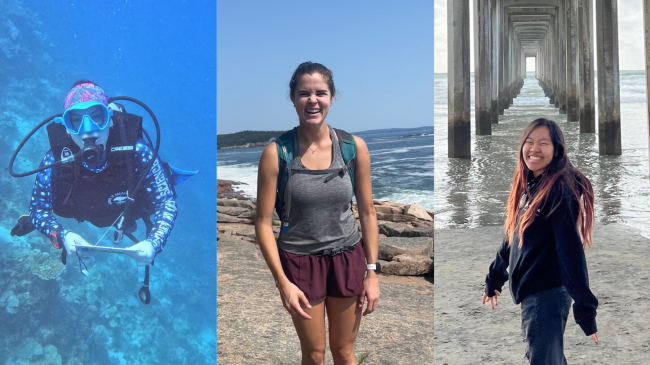
Staying afloat by staying positive
National marine sanctuary interns share ways for fellow youth to protect our blue planet
The youth: Three interns with NOAA's Office of National Marine Sanctuaries.
The action: These three young ocean advocates have joined forces to share ways that other youth across the country can take action to protect national marine sanctuaries and be a voice for the ocean. They recognized that the constant flow of negative information about the current and future health of the planet from news and social media can be overwhelming, especially for young people. Through their positive actions for supporting ocean conservation from anywhere, they challenge their peers to stay optimistic and motivated.
The takeaway: Don’t get bogged down by the negative news! Youth voices and actions are powerful, both collectively and individually.
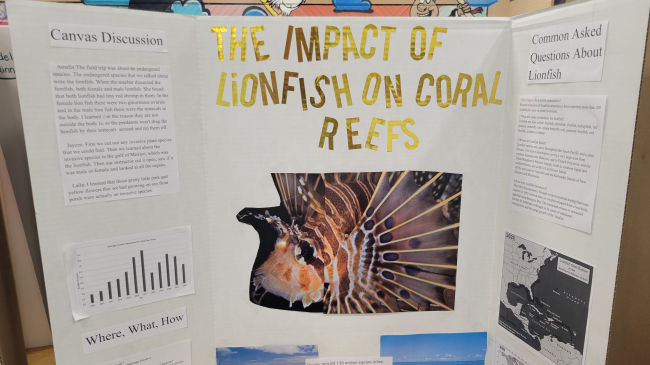
Learn through each other’s eyes
Middle schoolers host Environmental Action Conference to share field adventure experiences
The youth: Austin Middle School students in Galveston, Texas, who worked with Artist Boat, a nonprofit organization. This work was supported by NOAA through Flower Garden Banks National Marine Sanctuary and the Bay Watershed Education and Training (B-WET) program.
The action: Students chose local field adventures and developed their own driving questions to investigate. Adventures included exploring the sanctuary, learning about invasive lionfish, and touring the NOAA coral lab. Inspired by these experiences, students created projects and hosted an Environmental Action Conference, where they showcased what they learned. Students shared diverse perspectives and takeaways during peer presentations about their experiences.
The takeaway: Everyone has their own unique observations and interpretations! Sharing diverse perspectives can strengthen environmental ideas and actions.
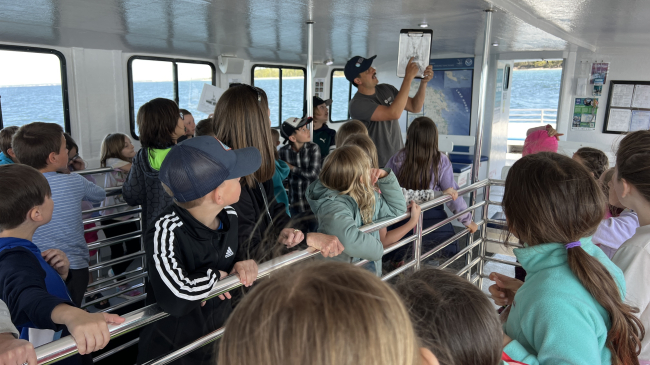
Bridging the past and the future
Third graders explore local maritime heritage to connect with the Great Lakes
The youth: More than 250 third graders who participated in the “3rd Grade Get Into Your Sanctuary!” program at Thunder Bay National Marine Sanctuary.
The action: The students’ visits to the Great Lakes Maritime Heritage Center brought Michigan history to life and allowed them to build a stronger connection to the Great Lakes and the ocean. These experiences included learning about the people and timeline of the region, what life on a schooner was like, as well as testing out scuba gear and building and driving ROVs. On their final visit, they set sail on a glass bottom boat into Lake Huron to see real shipwrecks! Throughout the program, students engaged with their maritime heritage to foster appreciation and understanding of their role as future protectors of the Great Lakes and the ocean.
The takeaway: Fostering personal connections to the local environment and its history can motivate you to take action to help preserve it! The earlier those connections are built, the better.
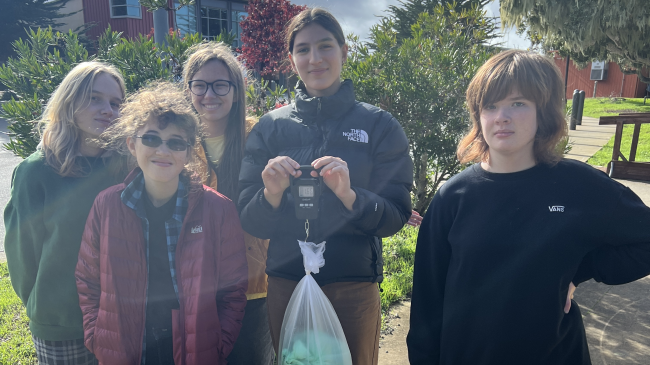
pave the way for peer action
Students create kits to remove and repurpose marine debris cluttering their campus
The youth: Students at Chartwell School, a NOAA Ocean Guardian School in Seaside, California, that serves neurodiverse children in grades 1-12.
The action: The students developed a NOAA Ocean Guardian Go-Bag, a backpack that fellow students can check out for hikes or field trips that is equipped with cleanup tools and a collection log to leave any space better than they found it. Guided by the 6Rs (Refuse, Rethink, Reduce, Reuse, Rot, Recycle), they removed more than 70 pounds of litter on their campus and throughout their community in an effort to protect the nearby Monterey Bay National Marine Sanctuary. Students even reused some of the debris they collected to create marine debris artwork.
The takeaway: By making environmental actions convenient and thinking through potential obstacles, you can make it easier for others to join in!



